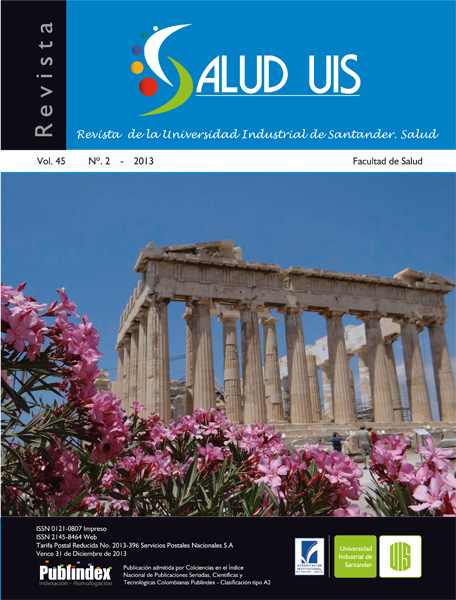Abstract
Usefulness of the tourniquet test in the differential diagnosis of Dengue of others febrile syndromes
RESUMEN
Introducción: El dengue es la infección transmitida por mosquitos más importante en el mundo. Siendo más susceptible a infectarse la población infantil. En la etapa inicial de la enfermedad los síntomas son indiferenciables de otros síndromes febriles agudos, situación que hace complejo, tardío y poco sensible el diagnóstico clínico en la fase aguda de la enfermedad. La prueba torniquete es utilizada como un criterio de clasificación para definir la severidad del dengue hemorrágico por la Organización Mundial de la Salud, podría utilizarse en el diagnóstico diferencial del dengue. Objetivo: Evaluar en población infantil las características operativas de la prueba torniquete en el diagnóstico diferencial del dengue de otros síndromes febriles agudos. Métodos: Entre junio de 2006 y Abril del 2008 se incluyeron del servicio de urgencias pacientes entre dos y 12 años de edad que presentaban un cuadro febril sin origen aparente. Se les realizó un examen físico estandarizado junto con la prueba de torniquete, calculándose la sensibilidad, especificidad, valor predictivo positivo (VPP) y negativo (VPN) a la prueba. Resultados: Se captaron 129 pacientes y se diagnosticaron 66 casos de dengue. La prueba torniquete tuvo sensibilidad de 60.6% (IC95%=48.8–72.4), especificidad 55.9% (IC95%=43.3–68.6), VPP 60.6% (IC95%=48.8-72.4) y un VPN 55.9%. (IC95%=43.3-68.6). El resultado de la prueba estuvo asociado al tiempo de tolerancia del torniquete (p<0.001). Conclusiones: La prueba torniquete por sí sola no es útil como herramienta clínica para diferenciar el dengue de otros síndromes febriles en niños entre los dos y los 12
años de zonas endémicas.
Palabras claves: Dengue, prueba de torniquete, prueba diagnóstica, sensibilidad, niños.
ABSTRACT
Introduction: Dengue is a mosquito-borne infection most important in the world. The infant population is more susceptible to infection. In the early stage of the disease the symptoms are indistinguishable from others acute febrile syndromes, a situation that makes it complex, slow and little sensitive the clinical diagnosis in the acute phase of illness. The tourniquet test is used as a classification criterion to define the severity of dengue hemorrhagic fever by the World Health Organization and could be used in the differential diagnosis of dengue. Objective: To evaluate in children the operational characteristics of the tourniquet test in the differential diagnosis of dengue from acute febrile other syndromes. Methods: Between June 2006 and April 2008 were included patients between two and 12 years, who had a fever without apparent source in the emergency department. Were evaluated by a standardized physical examination with the tourniquet test. We calculated the sensibility, specificity, positive predictive value (PPV) and negative (NPV) to the test. Results: 129 patients were captured and 66 dengue cases were diagnosed. The tourniquet test had a sensitivity of 60.6% (95% CI = 48.8-72.4), specificity 55.9% (95% CI = 43.3-68.6), PPV 60.6% (95% CI = 48.8-72.4) and NPV 55.9%. (95% CI = 43.3-68.6). The result of the test was associated with tourniquet tolerance time (p <0.001). Conclusions: The tourniquet test by itself is not useful as a clinical tool to differentiate dengue from other febrile syndromes in children between two and 12 years in endemic areas.
Keywords: Dengue, tourniquet test, diagnostic test, sensibility, children.
Se autoriza la reproducción total o parcial de la obra para fines educativos, siempre y cuando se cite la fuente.
Esta obra está bajo una Licencia Creative Commons Atribución 4.0 Pública Internacional.
